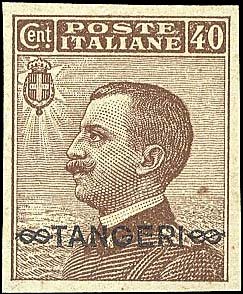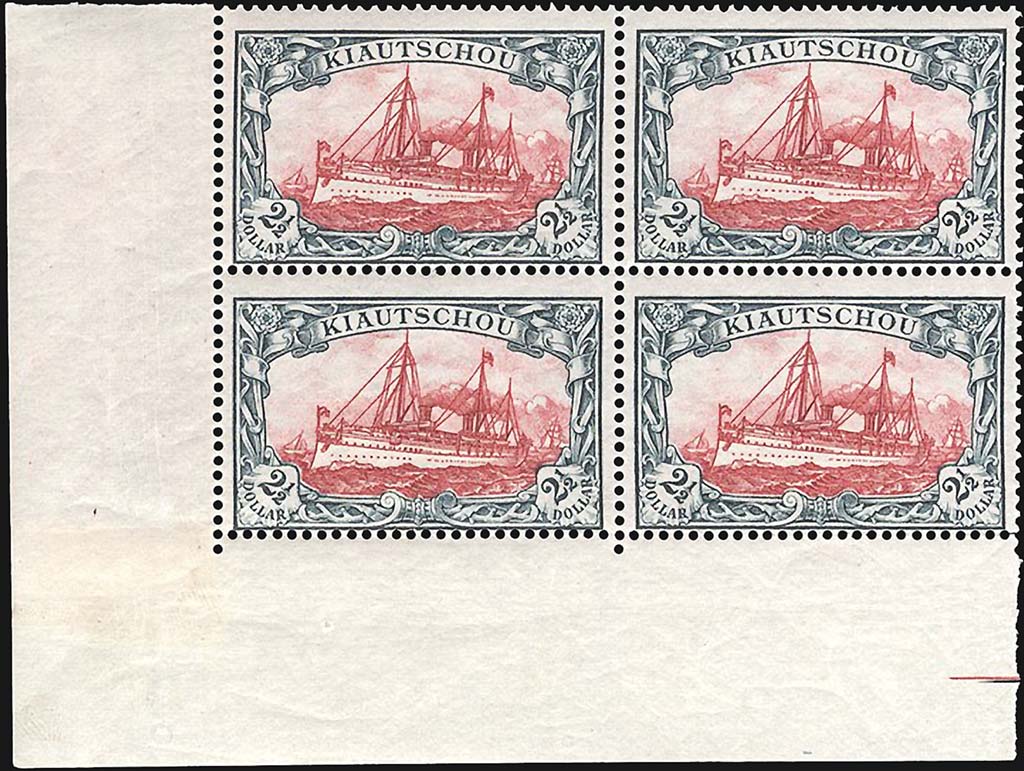Auctions
Yacht issues of Kiauchau shine in Cherrystone sale
By Matthew Healey, New York Correspondent
Cherrystone Auctions held a sale May 5-6 in New York with stamps and postal history of the world. The sale was previewed in Linn’s April 27 issue.
Although some of the lots featured in the Linn’s preview did not find buyers, other interesting and notable items did. One highlight was a set of dollar-denominated, unwatermarked high-value stamps, in mint blocks of four, from the former German colony of Kiauchau.
Germany seized the small territory surrounding the bay of Kiauchau (Jiaozhou in modern spelling), including the village of Tsingtau (now written Qingdao), in 1897.
The following year, Germany signed a 99-year lease for the territory with China, establishing a colony and naval base, although this agreement would be revoked by China at the outbreak of World War I in 1914.
At first, stamps of the German Offices in China were used, with an additional 5-pfennig surcharge in a variety of types (Scott 1-9). In 1901, German colonial stamps of the Kaiser’s Yacht The Hohenzollern type appeared, inscribed “Kiautschou” and denominated in pfennigs and marks (10-22). These were replaced in 1905 by a series of the same design valued in dollars and cents, representing the Chinese silver yuan currency, at first unwatermarked (23-32) and then with a lozenges watermark (33-42), which remained in use until the colony’s end.
The dollar-values on unwatermarked paper are the keys to a full set of Yacht issues from Kiauchau. A set of four marginal blocks of four of the ½-dollar, $1, $1½ and $2½ stamps (Scott 29-32), with all stamps never hinged, sold for $19,550, including the 15 percent buyer’s premium Cherrystone adds to all lots.
Over Chinese protests, the Treaty of Versailles awarded Kiauchau to Japan; the area finally was returned to China after U.S. mediation in 1922. The German colonial legacy lives on in Tsingtao beer, made at the local brewery founded by the Germans in 1903.
Collectors familiar with the 19th-century stamps of Great Britain know that in the early 1880s, when the post office decided it no longer needed separate stamps for telegraphs and for postage, it recycled the designs of its high-value telegraph stamps for use as postage stamps.
In the case of the £5 stamp, the authorities didn’t even bother ordering a new printing plate. The word “Telegraphs” was erased from each of the 56 impressions, and a second pass through the press filled in the blank rectangle at the top of the design with the word “Postage,” flanked by Greek-style oblong spirals.
The original telegraph stamps were in use for a much shorter period than the resulting postage stamps, and are correspondingly scarcer. A block of four with each stamp overprinted “Specimen,” said to be the only block of four surviving, sold for $16,100.
One of the odd things about the high-denomination telegraph stamps is their shamrock watermark. This quirk came about because, at the time, the stamps’ size was a novel one, and the only suitable paper was that used for Irish dog-license stamps.
Among the less expensive items in the Cherrystone May sale was an essay for a stamp for the planned Italian post office in Tangier. Several European powers established their own postal services in Morocco in the late 19th century, and by 1912, France and Spain had carved Morocco into protectorates. The northern port city of Tangier was made an international free zone in 1923, and Britain, France and Spain all had separate stamp issues for the city.
Italy tried to get in on the action too, overprinting the 40-centesimo King Victor Emmanuel III definitive with the name “Tangeri” between two dingbats that the Sassone catalog of Italian stamps describes as “Nodi di Savoia,” or Savoy knots.
However, the agreement to open the post office was never concluded, and the stamp issue was scrapped. Of the 400 imperforate, ungummed stamps printed, more than half were destroyed. An example in the Cherrystone sale sold for $805.
MORE RELATED ARTICLES
Headlines
-
US Stamps
Oct 7, 2024, 3 PMMcMurtrie dismissed as APS education director following Sept. 21 arrest
-
US Stamps
Oct 7, 2024, 12 PMVasiliauskas named president of Mystic Stamp Co.
-
US Stamps
Oct 6, 2024, 5 PMApgar souvenir card available
-
US Stamps
Oct 6, 2024, 4 PMFirst Continental Congress and U.N. stamps receive Scott catalog numbers








